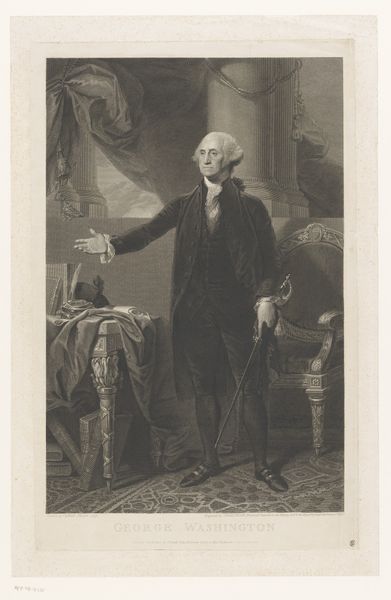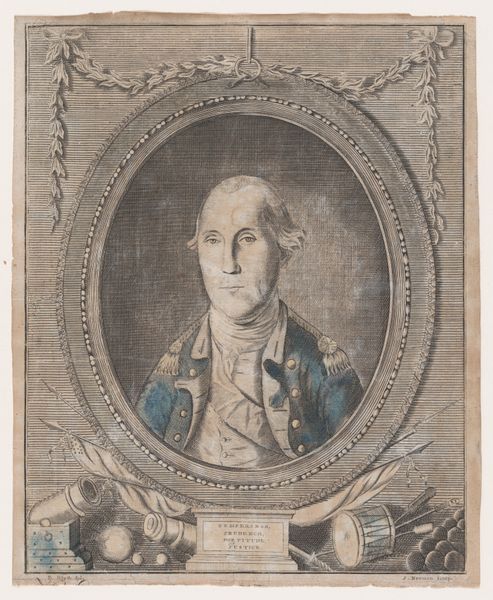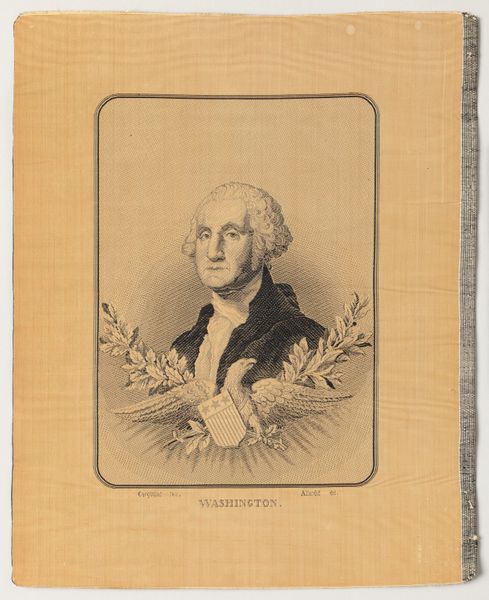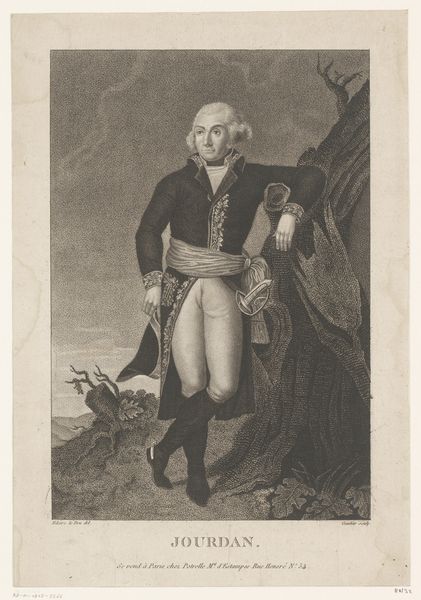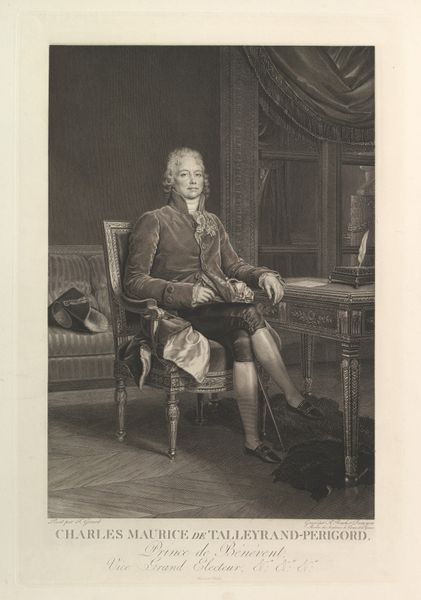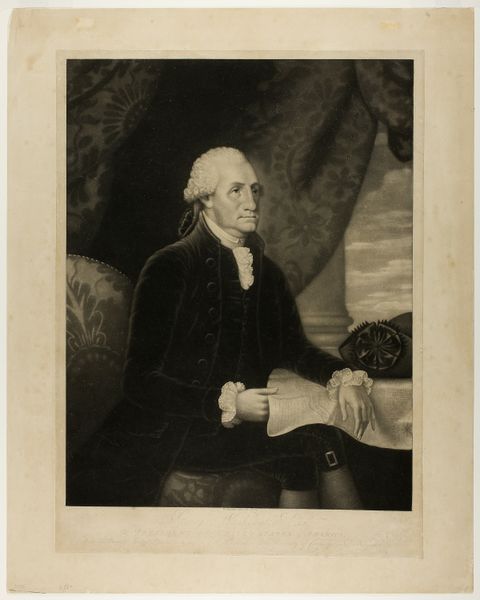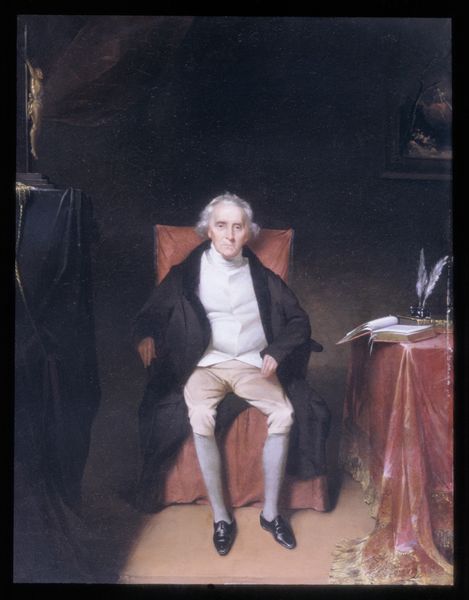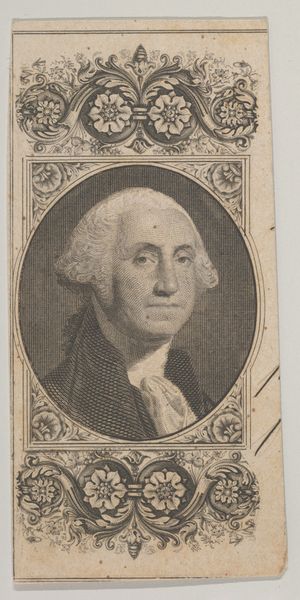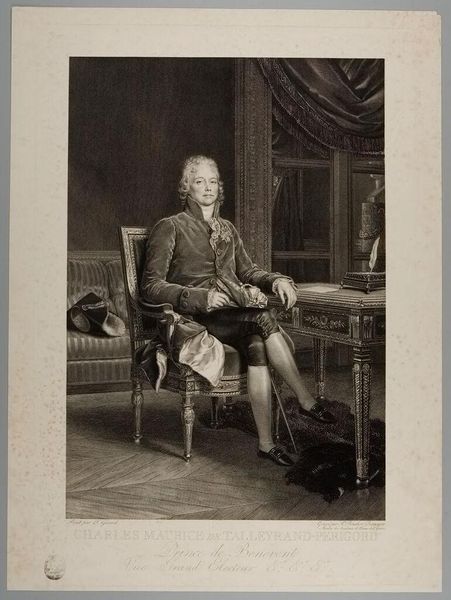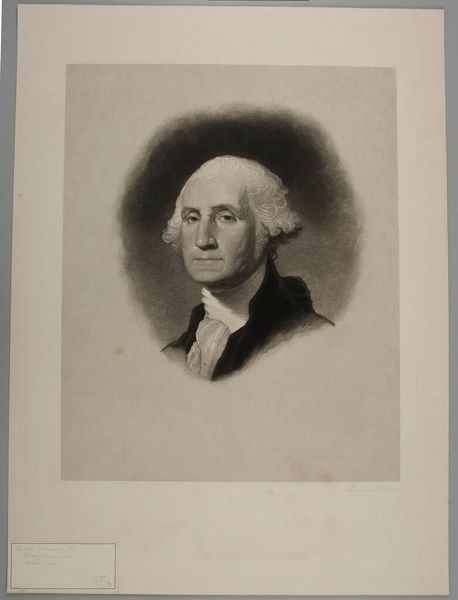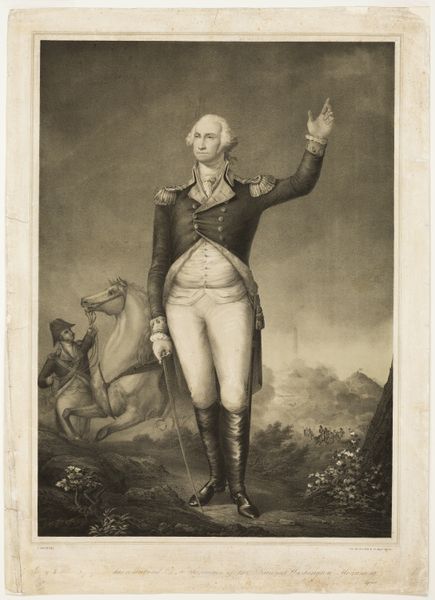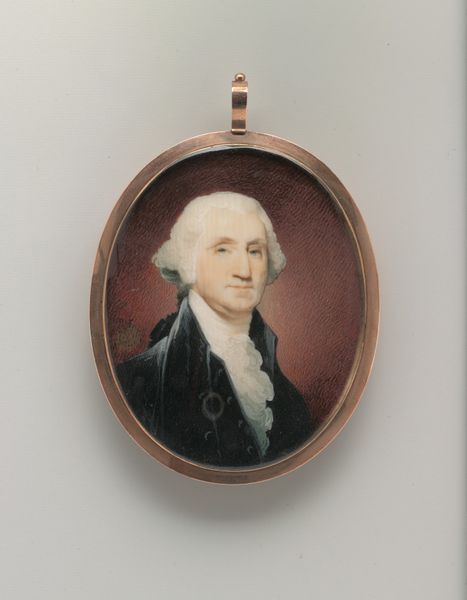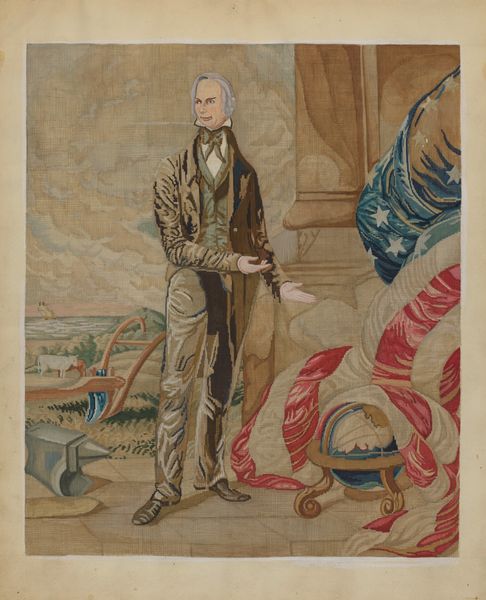
weaving, textile
#
portrait
#
weaving
#
textile
#
figuration
#
history-painting
Dimensions: 63.5 × 48.3 cm (25 × 19 in.)
Copyright: Public Domain
Curator: Here we have an arresting image of “Portrait of George Washington,” a weaving dating to around 1860, originally crafted by John Crossley & Sons Ltd. It now resides here at the Art Institute of Chicago. Editor: Well, my first thought is that the medium completely transforms our perception of Washington. It’s like seeing a familiar hero rendered in soft focus; the textile immediately domesticates what could otherwise be a very grand and imposing historical figure. Curator: Exactly. The shift from oil paint to textile underscores a shift in how these historical narratives were disseminated. The labor, the very *act* of weaving brings it closer to a form of accessible folk art than a high-art painting. The act of creating it implies both craft and the accessibility that mass production enabled in that era. Editor: It’s a fascinating choice, using such a traditionally ‘feminine’ medium – domestic, decorative – to portray a quintessential symbol of American masculinity. The sword and stance scream leadership, while the curtained background conveys authority and stagecraft. But that tension really works, it complicates the familiar narrative. Curator: I completely agree, the weaving method transforms him. Take a look at his garments, not painted but woven: What was the purpose of translating an already idealized image into another medium for the masses? Was it an attempt at democratization through domestic replication, or just late 19th century entrepreneurial spirit? Editor: Perhaps both! By this point, Washington’s image had ossified into iconography. It's less about historical accuracy and more about reinforcing national identity, ideas about duty and heroism rendered palatable and almost huggable! And the slight fuzziness of the weaving gives it that kind of warm effect, it softens any hard edges in our memory. Curator: Seeing how accessible mass production becomes a powerful method for solidifying certain views is important here. Examining such an item today requires delving into the intersection of aesthetics, technology, consumption, and accessibility. Editor: Indeed. Thinking about the image through layers—iconography, context, materials, emotions—offers rich possibilities, wouldn’t you agree? Curator: I’d say analyzing the making and purpose surrounding materials has illuminated some important information.
Comments
No comments
Be the first to comment and join the conversation on the ultimate creative platform.
